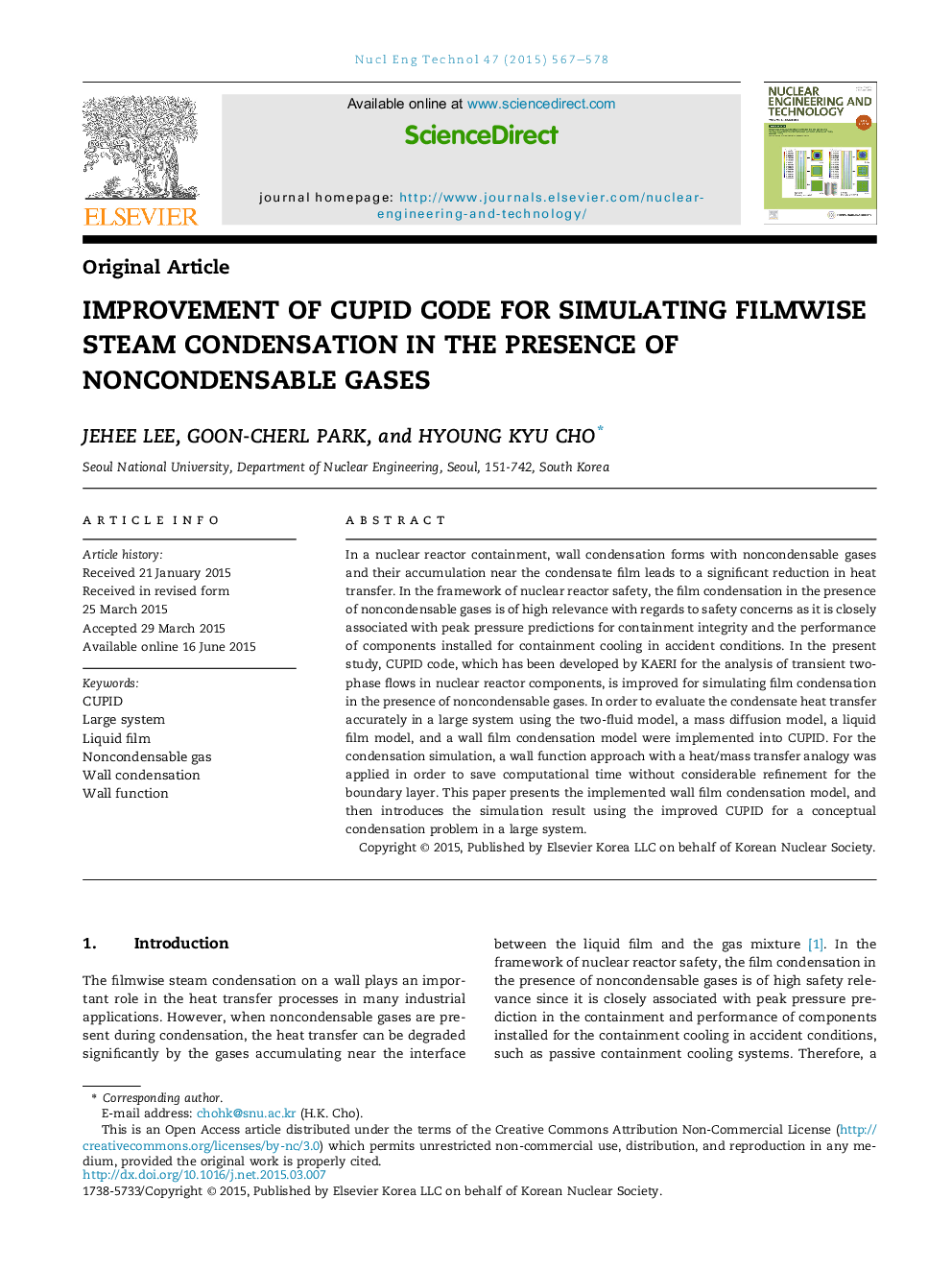| Article ID | Journal | Published Year | Pages | File Type |
|---|---|---|---|---|
| 1739968 | Nuclear Engineering and Technology | 2015 | 12 Pages |
In a nuclear reactor containment, wall condensation forms with noncondensable gases and their accumulation near the condensate film leads to a significant reduction in heat transfer. In the framework of nuclear reactor safety, the film condensation in the presence of noncondensable gases is of high relevance with regards to safety concerns as it is closely associated with peak pressure predictions for containment integrity and the performance of components installed for containment cooling in accident conditions. In the present study, CUPID code, which has been developed by KAERI for the analysis of transient two-phase flows in nuclear reactor components, is improved for simulating film condensation in the presence of noncondensable gases. In order to evaluate the condensate heat transfer accurately in a large system using the two-fluid model, a mass diffusion model, a liquid film model, and a wall film condensation model were implemented into CUPID. For the condensation simulation, a wall function approach with a heat/mass transfer analogy was applied in order to save computational time without considerable refinement for the boundary layer. This paper presents the implemented wall film condensation model, and then introduces the simulation result using the improved CUPID for a conceptual condensation problem in a large system.
